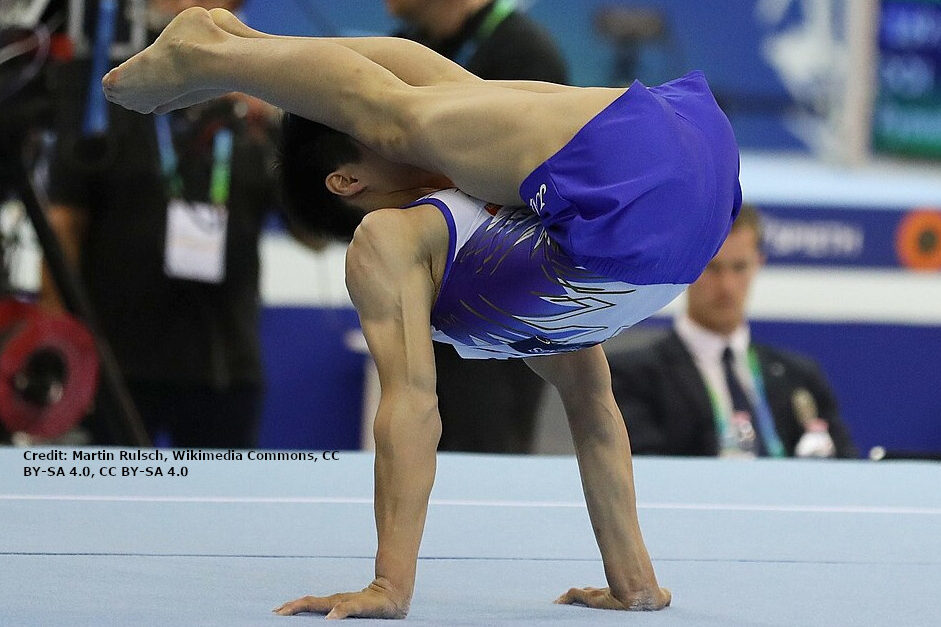Summary
The Manna is an advanced gymnastics skill where the body is supported only by the hands with the legs held horizontally above the shoulders in a pike position.
Training for a Manna requires proficiency in key physical attributes such as shoulder extension and retraction, pike compression, straddle compression, and wrist extension.
Gymnasts have various tools to progress the manna, including L-Sit and V-Sit variations.
Training a manna involves practicing a main manna progression, performing strength and flexibility accessories for physical preparation, as well as wrist strengthening.
In this comprehensive guide, we go over what a Manna is and what physical preparation a Manna requires. After, we go over a few manna cues before discussing various progressions that build up to a Manna. Finally, we describe one possible training strategy for learning a Manna.
What is a Manna?
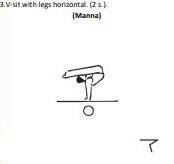
The Manna is an advanced gymnastics skill where the body is supported only by the hands with the legs held horizontally above the shoulders in a pike position. The FIG, the governing body of gymnastics, credits Bob Manna with the name of the skill, first performed for value in 1985 and named in 1993.[1] A progression of an L-Sit and V-Sit, the Manna is currently listed as a C in the FIG Code of Points.[2] Extremely challenging and impressive, few gymnasts or calisthenics athletes are able to perform the Manna.
Pre-Requisites: Physical Preparation for a Manna
The Manna requires a tremendous amount of strength and mobility through extreme ranges of motion. We can categorize a few key attributes that a Manna requires: shoulder extension and retraction, pike compression, straddle compression, and wrist extension.
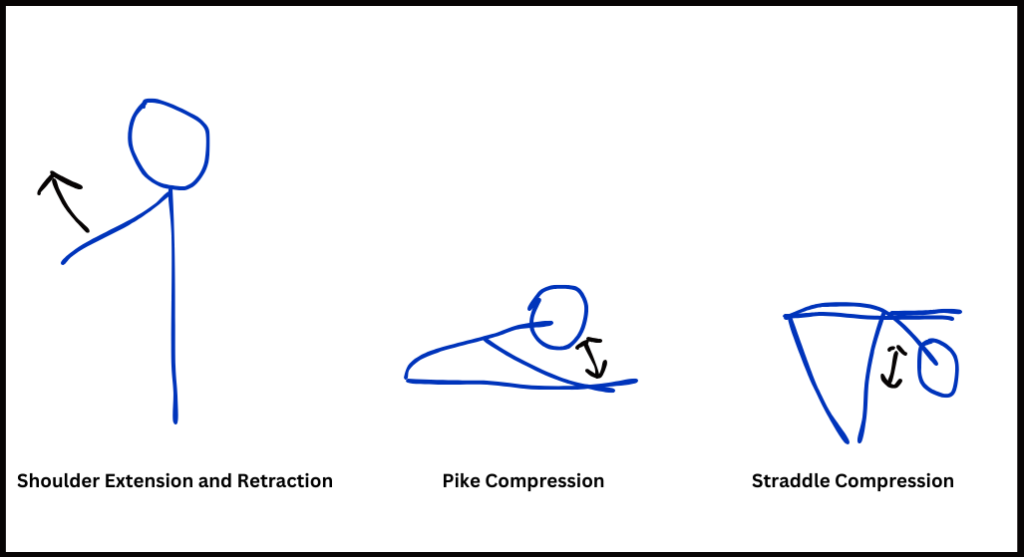
To help us improve these attributes, we have a few methods that produce robust gains in mobility when combined:
- Soft Tissue Work – This involves foam rolling or using a tennis ball on a particular muscle. 30-60s per muscle with low discomfort, performed first.
- Static Stretching – Targeted stretches usually held for 15-30s. Static stretching is how gymnasts classically train their flexibility.
- Active Flexibility – Moving through the range of motion without external help, strengthening the muscles to move the body into the positions we want.
- Eccentric Strengthening – Slowly moving into a position while contracting the lengthening muscles. Research shows eccentrics increase a muscle’s length while strengthening it. [3]
With these methods in mind, let’s look deeper at some of the prerequisite physical skills and some common exercises to improve them.
Shoulder Extension and Retraction
Extension involves pulling the arms behind the body while retraction involves pinching the shoulder blades together. This movement pattern develops the ability to support the body with the arms and creates the elevation of the body required in the manna. Some of my favorite and most effective exercises for improving shoulder extension and retraction.
German Hang: The most intensive stretch for shoulder extension, the German hang directly stretches the chest and lat muscles to help produce flexibility. You can approach the German hang in a few different ways. A simple static German hang can be held for 15-30s and repeated a few times. Another variation involving eccentric strengthening involves slowly lowering into the German hang for 5s, holding for 5s and then resetting, for 5 total reps.
Rear Support Drills: Improving rear support directly improves active mobility for shoulder extension and retraction. During these drills focus on pushing the hips up and pinching the shoulder blades back
– Rear Support Hold: the reverse of a push up position, supporting the body with the hands behind.
– Rear Support Sliders: place the feet on a furniture slider in rear support. Walk the body forward and backward.
– Shoulder Extension Sliders: Like the rear support sliders, but instead of walking out, let the shoulders very slowly slide into a shoulder stretch. Reset once you reach the bottom. Perform with a 5s slide out.
Manna Wall Slides: A more intense version of rear support slider drills, these drills involve sliding our feet up a wall as high as we can and then slowly lowering back down.
Pike Compression
One of our basic shapes in gymnastics, the pike involves keeping the legs straight and bending the torso forward as close to the legs as possible. The more a gymnast can compress in a pike, the less strength is needed to raise the body into a Manna. A great benchmark for pike flexibility is the seated pike stretch, where our gold standard would be if we can get the chest and face to touch the legs with the hands reaching past the feet.
Static Stretching –
– Pike Stretch: Seated or standing fold into a pike. You can also perform a pike stretch standing on the edge of a springboard, pulling deeper into the pike stretch by grabbing under the board. Variations of standing pike stretch also include crossing one leg over the other to further target the stretch.
Compression Strength –
– Hanging leg Lifts – From a dead hang on a bar, lift the legs to the bar. To focus on compression, keep the shoulder angle as open as possible.
– PBar Leg Lifts – Like a hanging leg lift, except supported on top of parallel bars and the legs will lift overhead instead of to a bar.
– Seated Leg Lifts – Sitting on the floor in a pike, place the hands past the knees and lift the feet off the floor. Place the hands further or lift the legs higher to make them more challenging.
Weighted Exercises
Eccentric weight training can improve hamstring flexibility by lengthening the muscles, which as a result will improve compression. Perform these exercises in sets of 5 reps with a 5s lower, and progress by adding weight, reps, or sets:
– Good Mornings – Stand tall with the hands behind the head, then hinge at the hips and lean forward while keeping the legs straight. The upper body should come down parallel to the floor. Hold a weight behind the neck to add difficulty.
– Romanian Deadlifts – Stand tall, holding dumbbells or a barbell down by your hips. Similar to a good morning, hinge forward with a slight knee bend, pushing the hips backward, until the back comes straight to parallel.
Straddle Compression
Straddle compression is less important than pike compression, but is useful for training progressions for Manna. For example, in a straddle V-sit, we want straddle compression. Also, training for a straddle will improve the pike.
Static Stretching – Splits will be great tools here, but the pancake is most helpful. The pancake stretch is the best benchmark for passive straddle flexibility in this context.
– Split Sliders: Starting from a lunge with the front leg straight, slowly slide as far into your split as possible and then hold the split. Emphasizing the negative phase during split sliders produces great gains in range of motion. While lowering, use as little support from the arms as possible and contract your muscles against the slide-out. You don’t need to go too low, so focus on the slow lowering, and stop when you feel mild to moderate discomfort.
– 2 sets of 5 reps, with a 5s lower and 5s hold
Weighted Exercises –
– Straddle Good Mornings – Perform a Good Morning from a straddle stand. This will target the groin slightly more than a standard good morning. You can vary the stretch by pointing the feet forward or turning them out.
– Seated Pancake Good Mornings – Perform a Good Morning from a seated straddle position then slowly lean into a pancake. This is the most direct way to perform an eccentric through the straddle compression range of motion.
Wrist Strength and Mobility
Wrist Curls:
– Isometric Holds: With a weight in hand and palm down, support your forearms on the edge of a surface, and hold the weight straight forward still for 30s+. Repeat with the palm up, and then repeat on the other arm. Progress over time by increasing weight.
– Eccentric Curls: In the position of the isometric hold, slowly let the weight lower for 5s and then reset. You can use a heavier weight here and use the other arm to help reset after each rep. Perform 5 reps with a 5s lower palm up, palm down, and on each arm and progress over time by increasing weight.
Wrist Push-Up Burnout:
– Perform a set of 20-30 wrist push ups with palms down and fingertips pointed forward. Then repeat with the top of the hands on the floor with fingertips pointed toward the body. The goal is to get blood flowing to the wrist, so you don’t need lean all of your body weight into the wrists.
Manna Technique
Physical preparation is necessary to learn a Manna, however a few key technique points may help progress.
Focus on pushing the hips forward and up. Elevating the hips will then naturally tilt the legs backward toward the horizontal position for a manna. A similar cue is to push the shoulders forward as you lift your hips.
As you progress from a V-Sit toward a Manna, balance becomes more of an obstacle. Consider practicing with mats or cushions behind you to catch a fall backward. Also, using a backward hand position helps aid balance by using the fingers to counterbalance. If this wrist position causes pain, consider elevating up onto the thumbs as well.
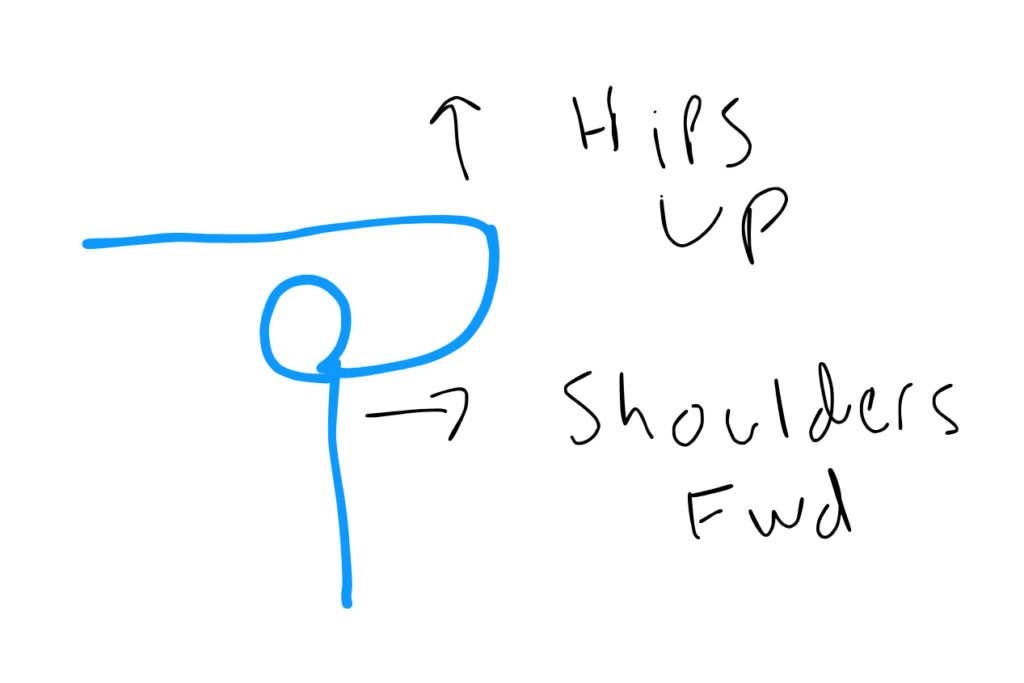
Skill Progressions
The Manna breaks down into a few progressions. Starting from an L-Sit and gradually bringing our legs higher toward a V-Sit, you then progress to tilting the legs backward toward a Manna. The following progression chart shows these progressions, and the sub-progressions required to reach them:
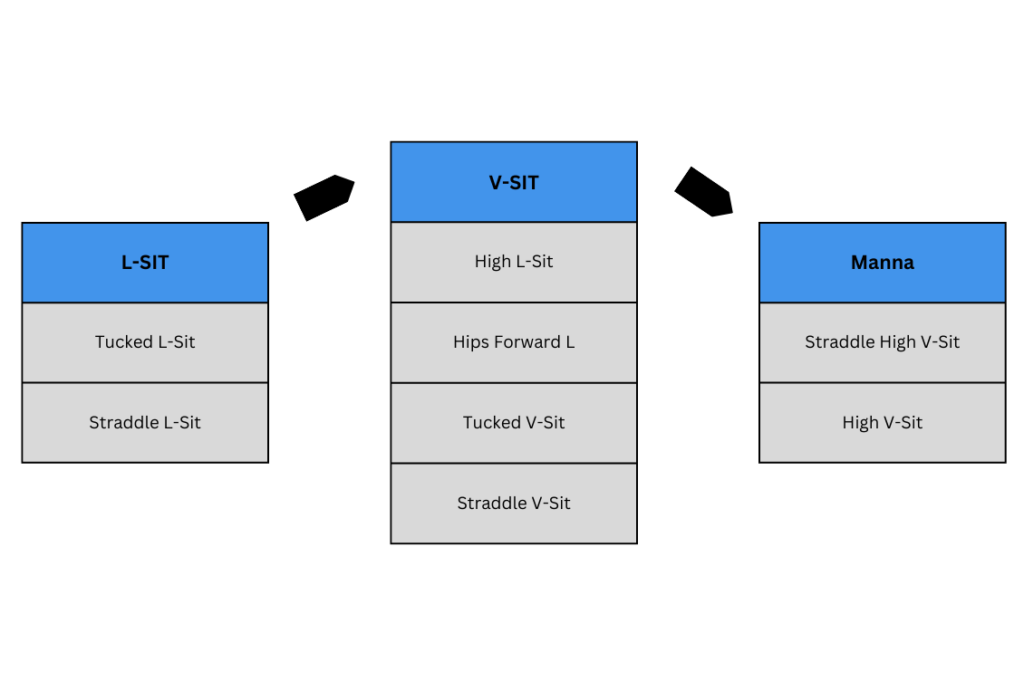
Let’s break down some of these progressions
L-Sit
- Tucked L-Sit: seated on the floor in a tucked position, place your hands on the floor next to your hips and push push your arms and shoulders up so the hips lift off the floor.
- Straddle L-Sit: seated on the floor in a straddle position, lift the body off the floor as in the tucked L-sit.
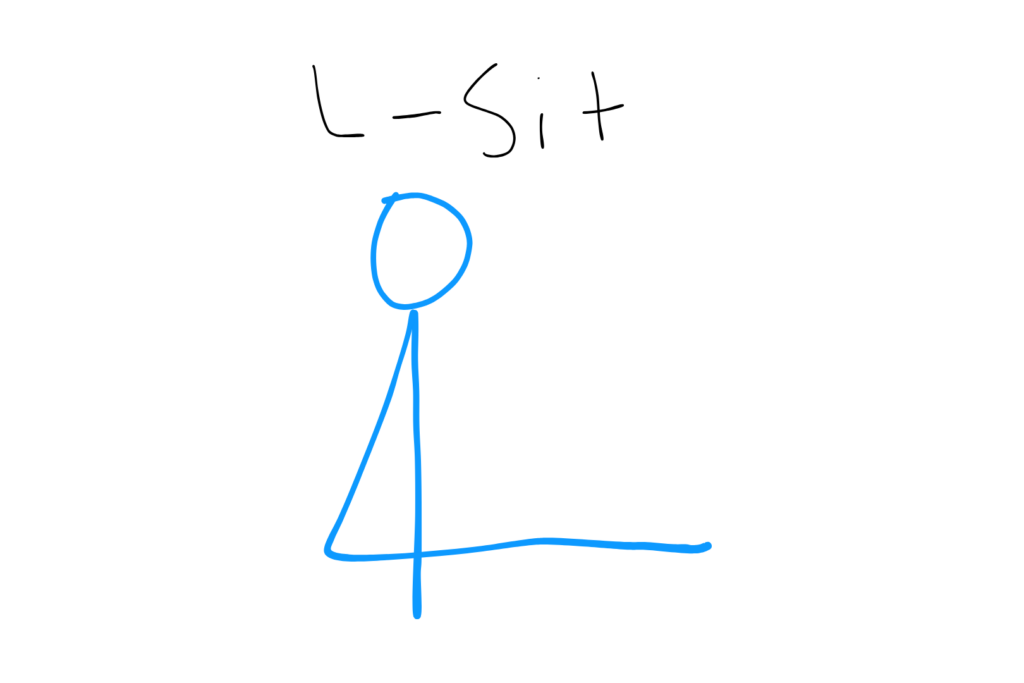
V-Sit
- High L-Sit: An L-Sit, but raise the legs above parallel. You can measure progress by checking the angle above parallel.
- Tucked V-Sit: Similar to the tucked L-Sit, but hold the knees straight vertical and push the hips forward in front of the body.
- Straddle V-Sit: A very helpful sub progression of the V, keep your legs straddled as you push the hips forward. The legs should point vertically while in the straddle. With proficiency, bringing the legs together from here creates a V.
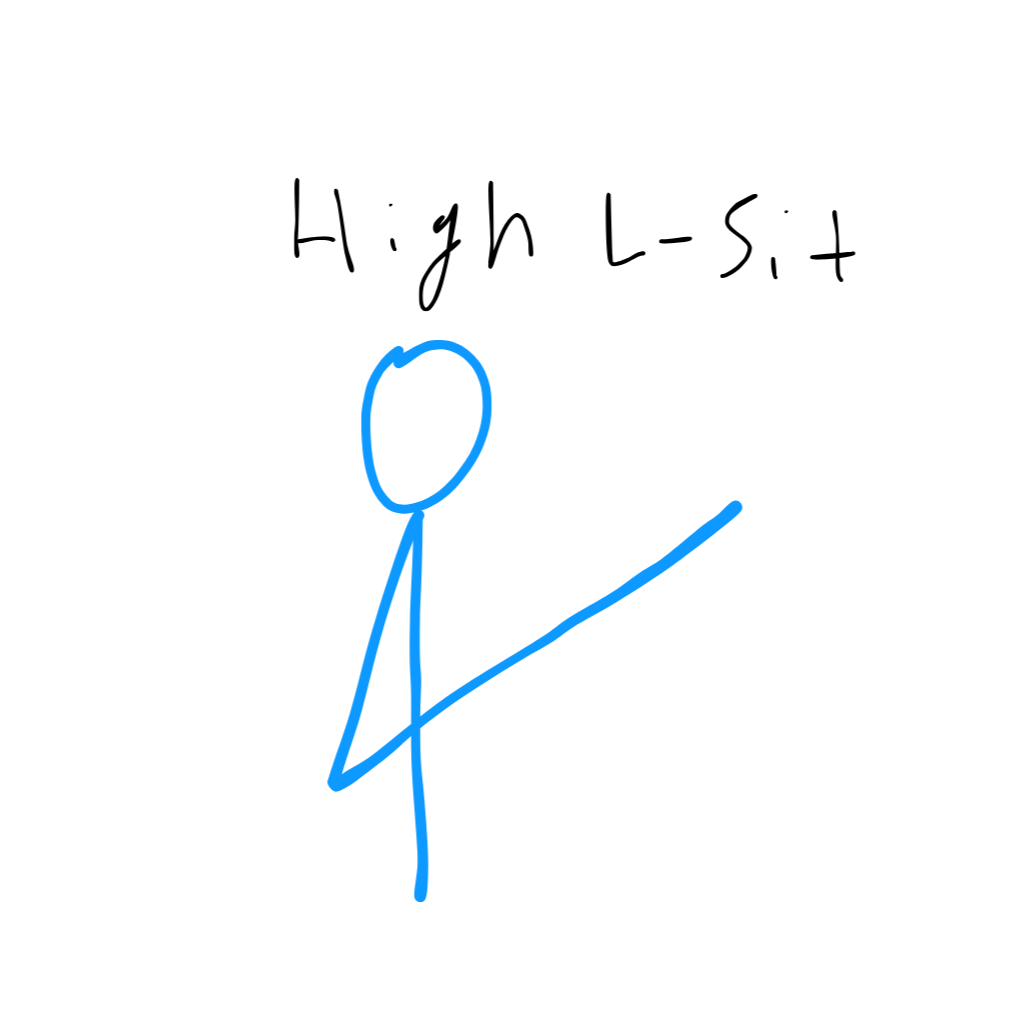
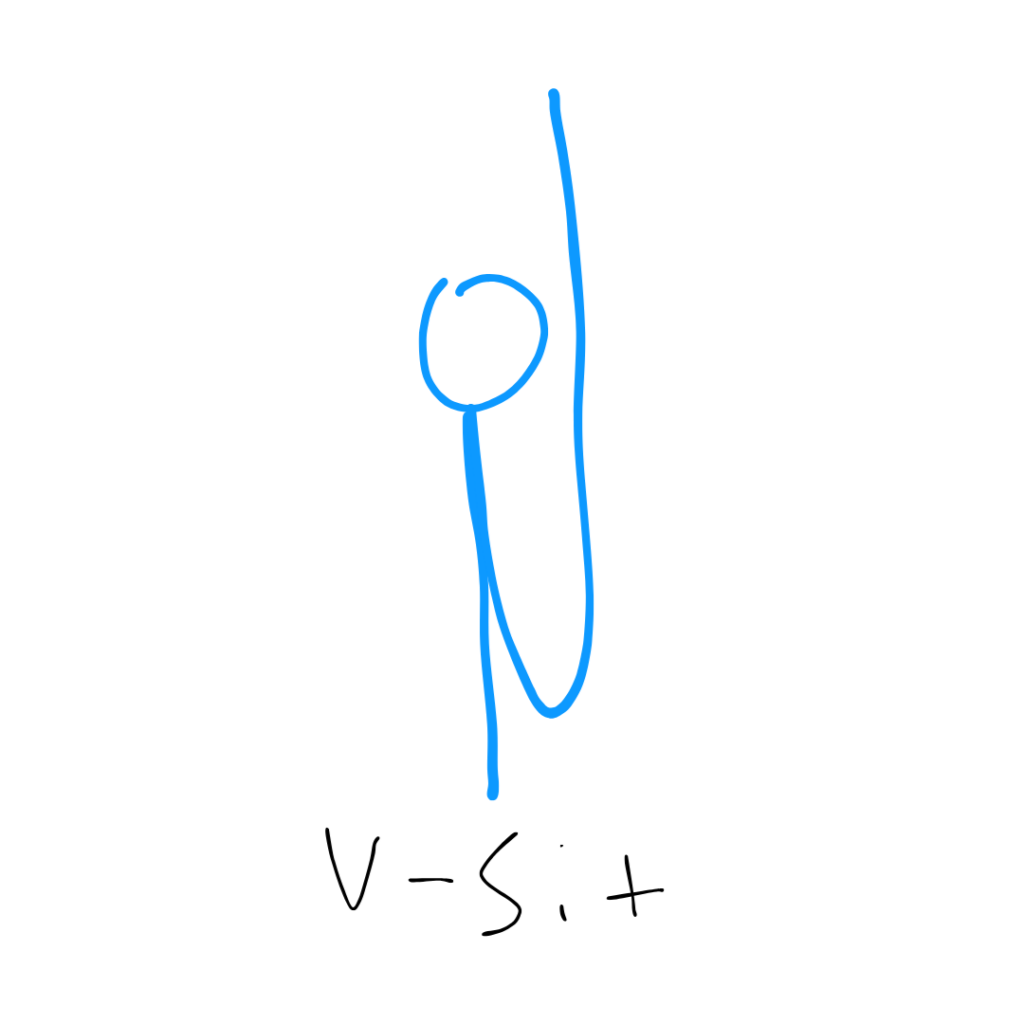
Manna
- Straddle High V-Sit: From the straddle V, point the legs backward past vertical. Just like previous progressions, you can measure progress with the angle past vertical. The goal is to get the legs parallel with the floor above the head.
- High V-Sit: From a V, point the legs backward past vertical. Same with the straddle high V, we want to get back to parallel above our head.
Training Structure
Many different training structures will produce results, but we can look at one particular framework. The framework will be similar no matter what training progression you are currently targeting, just with different exercises.
*** Make sure you are warmed up prior to your training ***
- Wrist Accessory Strength: performing wrist exercises first prepares them for the work to come.
- Main L-Sit Progression: 3 sets of 3 reps. Start with a progression that you can hold for 3-5s and then add time every few sessions, building to 8-10s. At that point, make the variation more challenging and restart with a shorter hold.
- Physical prep work: A static stretch and an accessory strength exercise for each shoulder extension, pike compression, and pancake compression.
Sample Manna Training Plan
Let’s take an example of someone who has a V-Sit and is working toward a Manna:
- Wrist Accessory Strength:
- Isometric Holds – 2 sets of 15-20s weighted hold both palm up and palm down.
- Wrist Curls – 2 sets of 15-20 reps weighted both palm up and palm down
- Main Manna Progression – Straddle High V-Sit
- 3 sets of 3 reps for 3-5s.
- Increase hold time first. Once holding 8-10s, reset the time and raise the hold angle.
- Alternatively, progress by bringing legs together to a High V-Sit before increasing time or angle.
- Accessory Strength Exercises –
- Manna Wall Slides – 2 sets of 3-6 reps with 3s lower
- P-Bar Leg Lifts – 2 Sets of 10-15 reps
- Seated Pike and Straddle Leg Lifts– 2 sets of 10-15 reps each
- Flexibility Exercises
- Shoulder Extension Sliders – 2 sets of 5 reps, with a 5s negative and 5s hold at the bottom.
- Straddle Good Mornings – 2 sets of 10 reps with a 3s lower.
- Pancake, Middle Split, and Pike Stretch– 2 sets of 15-30s each.
The accessory and flexibility exercises can be replaced with other targeted physical prep exercises based on your personal needs. For example, if your shoulder extension is great, but pike compression is not, feel free to replace the wall slides with hanging leg lifts or shoulder extension sliders with good mornings.
Likewise, foam rolling can be added either before wrist accessories or before flexibility exercises if you want to further loosen up some muscles for mobility work.
Citations
- International Gymnastics Federation. Named Elements. 2021, https://www.gymnastics.sport/site/pdf/mag_named_elements.pdf. Accessed 5 Sept. 2024.
- International Gymnastics Federation. MAG Code of Points 2025-2028. 2024, https://www.gymnastics.sport/publicdir/rules/files/en_1.1%20-%20MAG%20CoP%202025-2028.pdf. Accessed 5 Sept. 2024.
- Vetter, Sebastian, et al. “The Effects of Eccentric Strength Training on Flexibility and Strength in Healthy Samples and Laboratory Settings: A Systematic Review.” Frontiers, Frontiers, 31 Mar. 2022, www.frontiersin.org/journals/physiology/articles/10.3389/fphys.2022.873370/full.
- Reddit. (2020, July 22). Manna tutorial [Online forum post]. Reddit. https://www.reddit.com/r/bodyweightfitness/comments/hk3s07/manna_tutorial/

